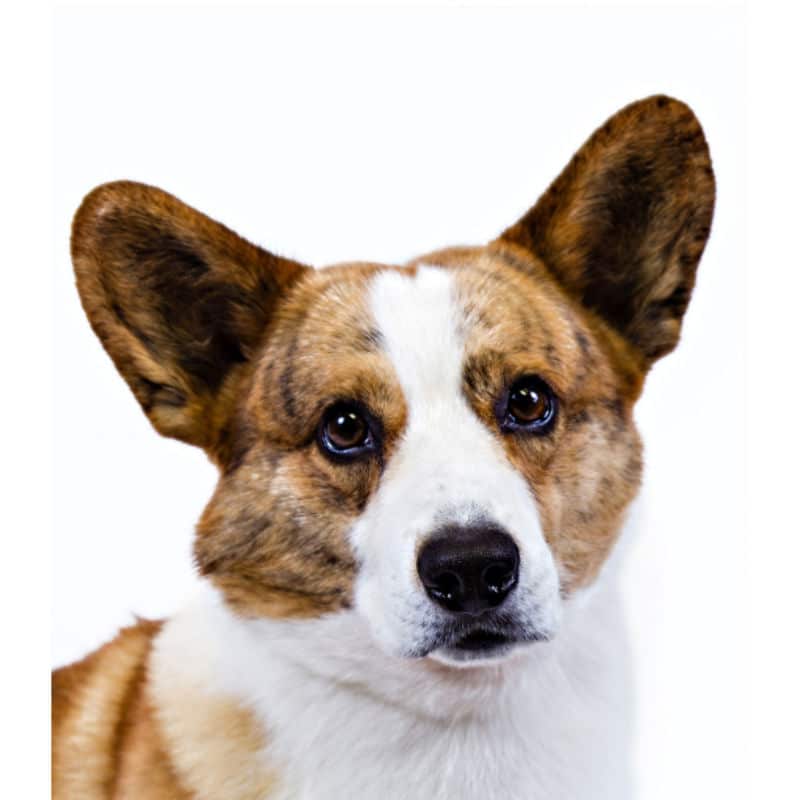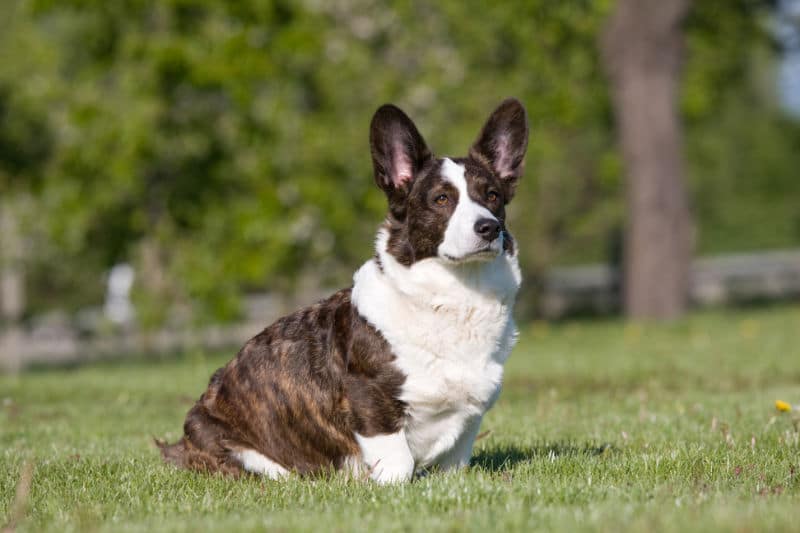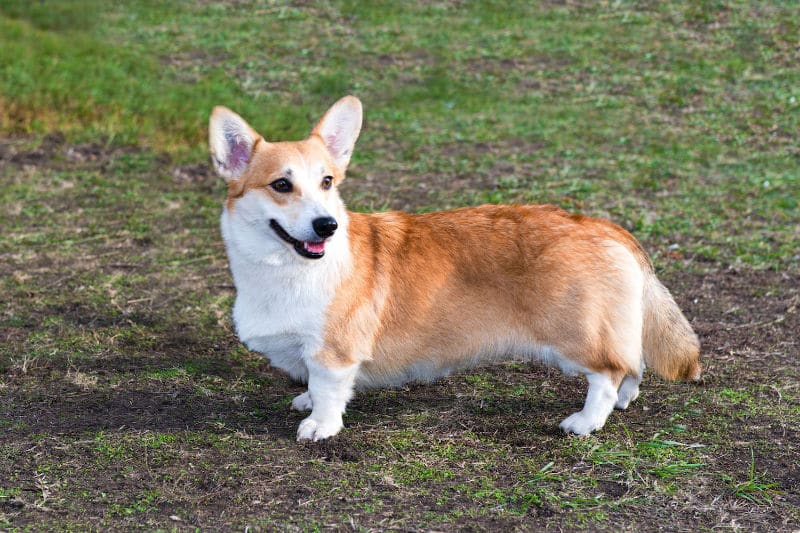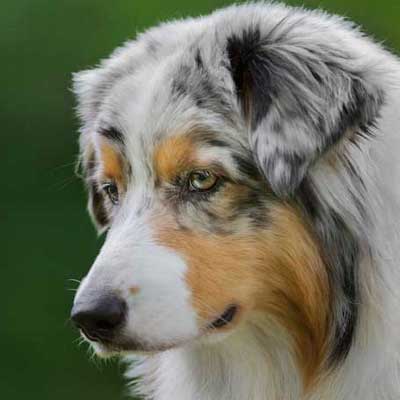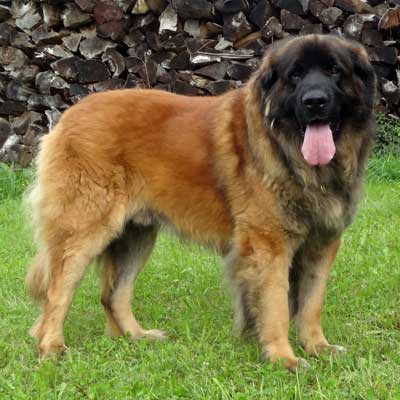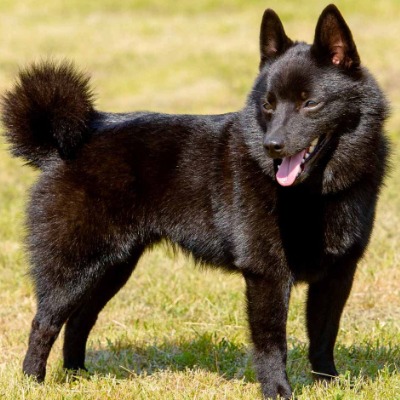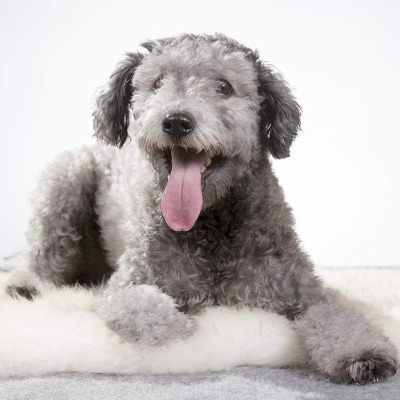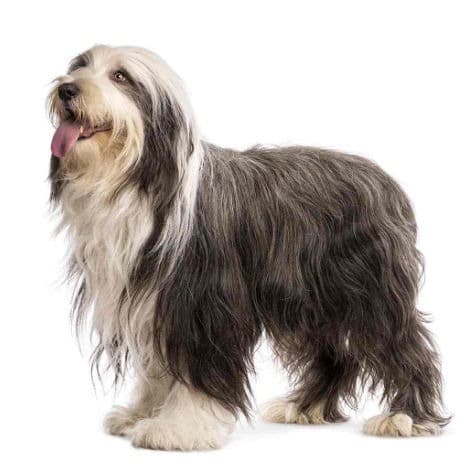Welsh Corgi Cardigan
Pleasant sheperd, the Welsh Corgi is a small size dog with a great character
The origin of the breed is uncertain. Some argue that the first examples arrived in England as a result of Flemish weavers. According to others it is instead a native dog.The region from which it spread is however Wales, where it was used for the surveillance of poultry animals on farms in the Welsh moors.The first use of the Corgi as a guide dog for herds of cattle dates back to the 15th century. It was at this time that Wales began supplying large English cities with meat.The Welsh Corgi comes to distinguish itself in two varieties: the Welsh Corgi Pembroke, more ancient, and the Cardigan, of more recent selection. During the twentieth century the breed begins to be highly appreciated for pure company, thanks above all to its use in this sense by the Queen of England.In 1934 the Kennel Club determined that Cardigan and Pembroke had to be two distinct breeds and not just two varieties of the same dog.
-
Head
fox face shape and appearance -
Head - Cranial Region
Skull: broad and flat between ears; it gradually decreases towards the eyes, above which it is slightly domed
Stop: moderate -
HEAD - FACIAL REGION
Black truffle; it protrudes slightly and is absolutely not blunt.
Muzzle: Tapering moderately towards the nose
Jaws / Teeth: Strong teeth with scissor bite, i.e. with the upper incisors closely overlapping the lower ones and set perpendicular to the jaws. The lower jaw clearly delineated. It is strong but without being bulging -
Neck
muscular, well developed, proportionate to the size of the dog. It fits well into the shoulders -
Body
quite long and strong
Top line: horizontal
Loin: waist clearly marked
Chest: Moderately broad with prominent breastbone. Sternal region sloping, ribs well sprung.
-
Tail
similar to that of the fox, inserted on the extension of the dorsal line and moderately long (reaching or almost to the ground).
Carried low at the station, it can be raised a little above the line of the body in motion, but not rolled up on the back
-
Body
sturdy skeleton. Short legs but the trunk clearly distanced from the ground -
Front limbs
Shoulders: well supported, muscular; form an angle of about 90 ° with the forearm
Elbows: Close to the chest
Forearm: Slightly arched to follow the shape of the chest.
Forefeet: Round, closed, fairly large, with good pads. Slightly turned out.
-
Hind limbs
Strong, well angled and aligned, with muscular thighs and legs; strong bone down to the ground.
Short legs
Metatarsus: Vertical when standing, seen from the side and from behind
Hind feet: Round, compact, rather broad and well padded.
-
Gait / Movement
free and lively movement, with the elbows close to the body, neither low cut nor too tight.
Forelegs that have a good reach without rising too much from the ground, in harmony with the thrust of the rear.
-
Coat - hair
short or medium, of hard texture. Waterproof, with good undercoat.
Preferably straight
-
Coat - color
any color, with or without white markings, but white should not predominate -
Size and weight
Height at the withers: ideal 30 cm
Weight in proportion to size, first of all taking into account the balance of the whole.
-
Faults
Any departure from the foregoing points should be considered a fault and the seriousness with which the fault should be regarded should be in exact proportion to its degree and its effect upon the health and welfare of the dog and on its ability to perform its traditional work.
-
Disqualifying faults
- Aggressive or overly shy dog
- Any dog that clearly shows physical or behavioral abnormalities will be disqualified
NB
- Male animals must have two apparently normal testicles fully descended into the scrotum.
- Only functionally and clinically healthy dogs, with breed typical conformation, should be used for breeding.

